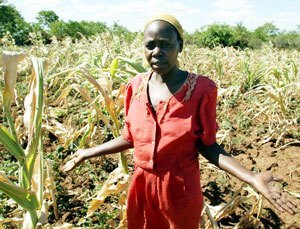
Hunger remains rampant within our nation. However, the build-up to Zimbabwe’s watershed elections has consumed local and foreign press.
Sunday View with Thandeka Mujati
Amidst the meticulous documentation of our political woes, people’s daily struggles for food have been overshadowed. Last week the World Food Program (WFP) report revealed, “Hunger is the world’s number one health risk.
Hunger kills more people every year than Aids, malaria and tuberculosis combined”. In our fervent struggle to overcome diseases and political struggles that have decimated our population, it feels as though we have almost overlooked an even more dangerous killer that has taken more lives and is dangerously prevalent on our continent, hunger.
Issues of hunger and famine are nothing new. Images of famine ravaged countries have been sporadically sprawled across papers for decades. This once prevalent coverage of famine has had a desensitising effect on many.
In the world’s case, hunger has become a ferocious beast that has multiplied and killed millions of people.
Unicef revealed that under nutrition contributes to 2,6 million deaths of children under five, every six seconds a child dies from hunger or a hunger related disease. The WFP 2012 report revealed that 25 000 people die a day from hunger. This distressing statistic is even more painfully accurate within the African context.
Food production in Zimbabwe has been destroyed by the combination of our economic and political instability. Over the years droughts, sporadic floods, poor harvests and high unemployment have had disastrous results. In 2012, the Zimbabwe Vulnerability Assessment Committee (ZimVac) estimated that more than 1,6 million Zimbabweans will be unable to access sufficient food during the peak hunger period of 2013. This marks the highest level of food insecurity within Zimbabwe in the past three years.
- Chamisa under fire over US$120K donation
- Mavhunga puts DeMbare into Chibuku quarterfinals
- Pension funds bet on Cabora Bassa oilfields
- Councils defy govt fire tender directive
Keep Reading
The Zimbabwe National Statistics Agency (ZimStat) announced in 2012 that only 11% of Zimbabweans are employed in the formal sector. Many Zimbabweans don’t have the stability of a monthly pay cheque; they are struggling to survive and living on a prayer because they have nothing left.
With our rapidly increasing unemployment rate, it is not surprising that there are no long-term solutions to aid famine in our country. People are consumed by planning what they will eat today. They do not have the luxury of planning ahead when the present is so dire.
Hunger is a global problem, however, within our continent it has been an alarmingly constant epidemic. The Food and Agriculture Organisation (FAO) announced that 98% of the world’s undernourished people live in developing countries.
That’s a harrowing statistic, amidst the well-documented hoopla of politics; detailed accounts of commuter omnibus incidents at the Copacabana rank and thorough insights into religion and popular churches; which are all valid news pieces.
They are not a true reflection of the current status quo of Zimbabwe in its entirety. Hunger stories and deaths seldom make the front page, but that does not mean they do not exist; they need to be discussed. Hunger’s continuous presence in the media will ensure continuous dialogue on this calamitous situation, that will hold the government accountable.
Our government needs to shift to a more pro-active preventative solution, as opposed to this faulty band-aid system we have fallen into. Hunger stifles development and creates a deadly cycle that produces the same devastating results.
Simply put, when a family has sufficient food, parents can truly focus on the future and shift from survival mode to truly improve their lives. When the food runs out, so does hope for the future.











